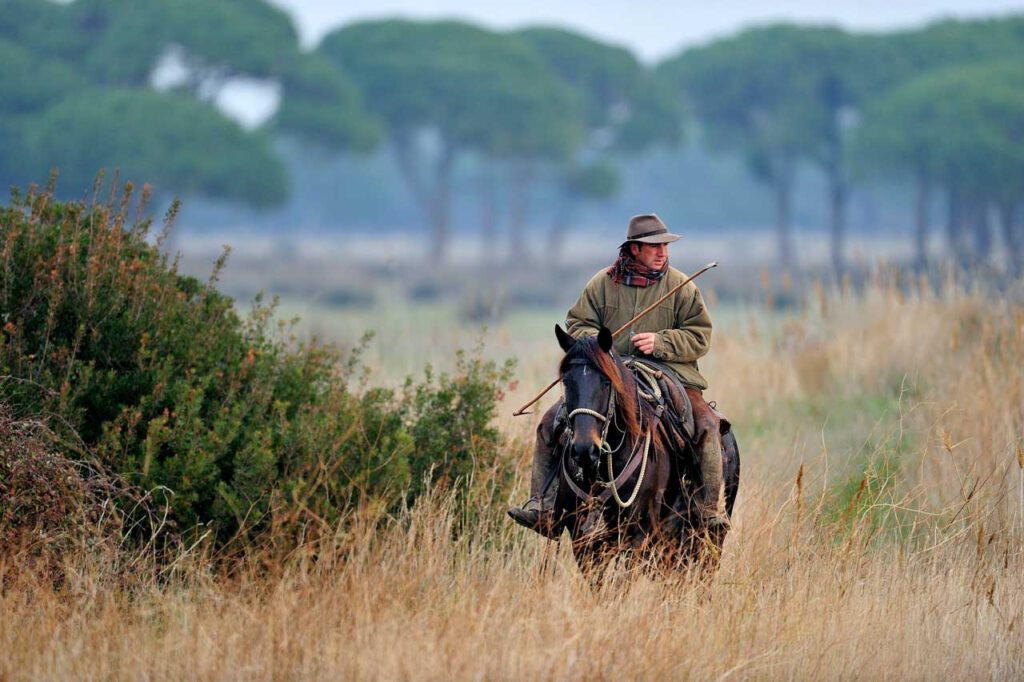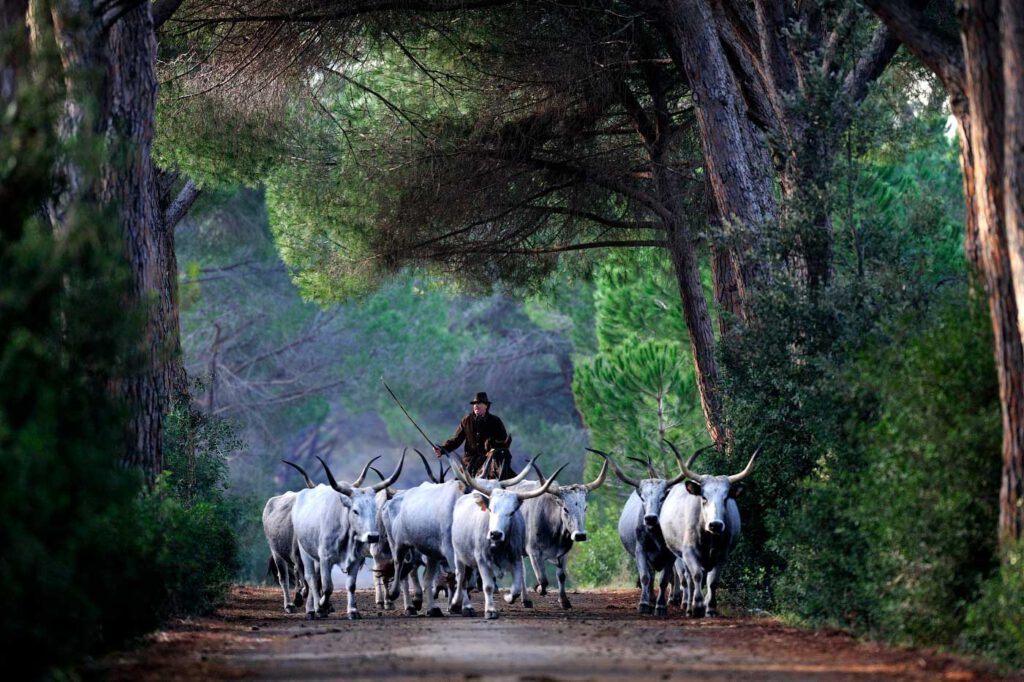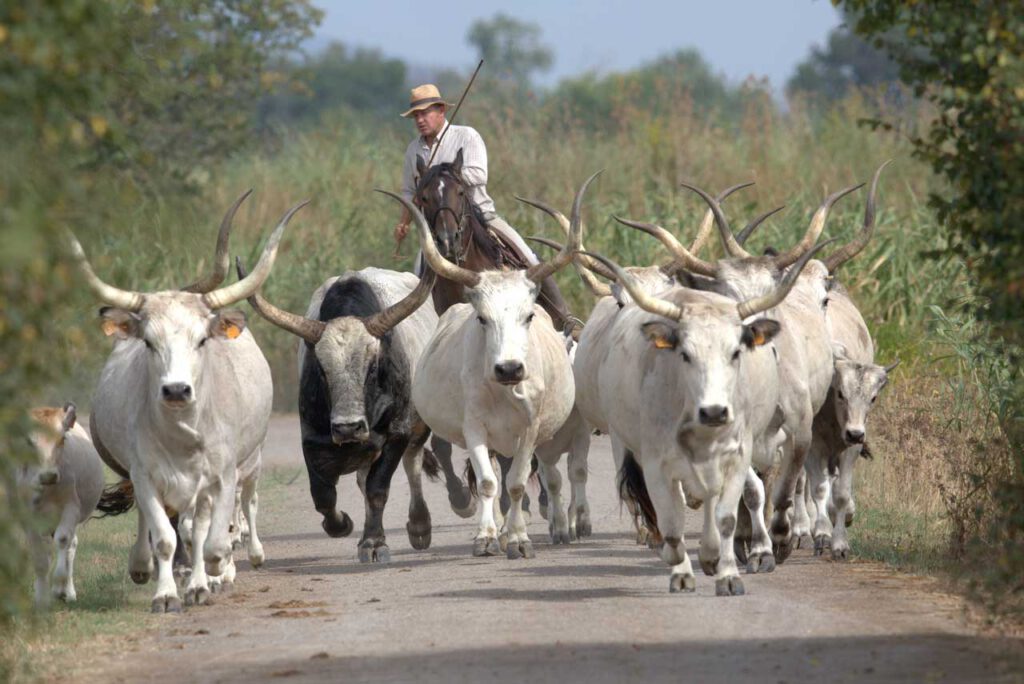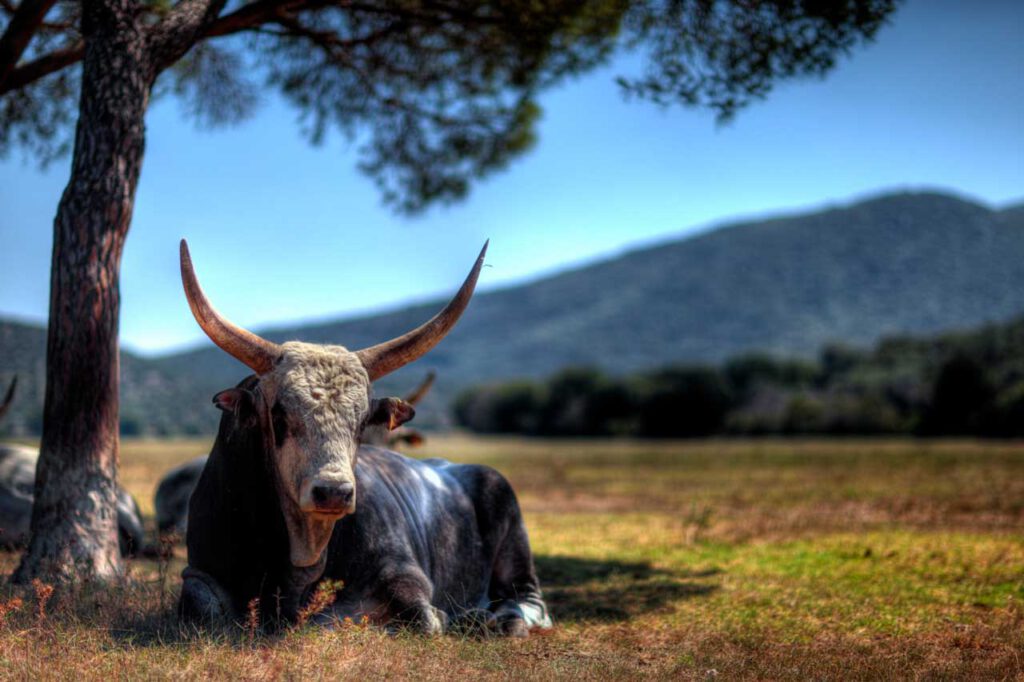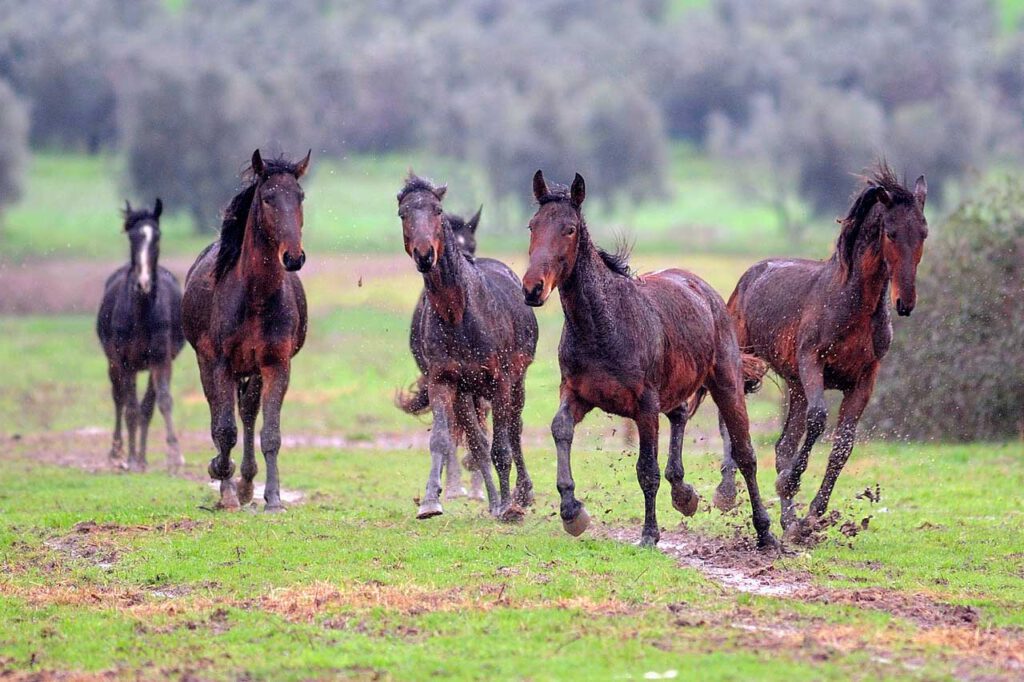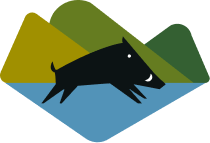An ancient story
Along the road or cycle path to Marina di Alberese it is easy to come across large, long-horned Maremma cattle grazing. The Park is in fact one of the few places where this form of wild farming is still practiced, which is today a memory and symbol of the Maremma of the past. Breeding within the Park is carried out by some private companies and by the Ente Terre Regionali Toscane, an organism of the Region that derives from the transformation of the Alberese Regional Agricultural Company
The Maremma breed is in fact a very ancient breed. It is not known exactly whether these animals are direct descendants of the cattle – perhaps Cretan – imported into Italy by the first Neolithic farmers, or whether they also derive from crossbreeding with specimens that arrived in Italy with the barbarians, but similar cows are already portrayed in the paintings of some tombs Etruscan. However, their wild breeding must have been born in late Roman times, when the Maremma began to be divided into large estates with terrain often made impervious by scrubland and swamps.
An animal out of the ordinary
The selection, which has lasted for centuries, has produced an extraordinarily robust and frugal animal. The Maremma cow is capable of always being outdoors, facing freezing winters and scorching summers, of moving and finding food in thorny scrub as well as in swamps, and of defending itself from predators. His muscles are very strong. The very hard claws are suitable for any type of terrain. The dewlap that runs from the neck down to the chest helps thermoregulation even when it’s hotter. The horns instead help it to extricate itself from the branches of the bush. The bull, which can reach 12 quintals in weight, has crescent-shaped them, while the female, around 6-7 quintals, has lyre-shaped ones.
These characteristics have also made the Maremmana the working animal of the farmer for centuries, who instead raised it in stables. Until the Second World War, she was the “tractor” that dragged the wagon like any type of agricultural tool.
Breeding according to the seasons
The life of the Maremma has always been marked by natural cycles. Even in the Maremma Park, spring is spent on open pastures or in the pine forest, where the cows can find enough herbs and shrubs for breastfeeding, not without the addition of hay or straw if necessary. In the summer they are moved to marshy areas, woods and meadows richer in water. When winter arrives they are moved to the woods or scrubland, where they find shelter from the cold and can also feed on acorns and other fruits, as well as the leaves of evergreen plants.
Calves are born, generally one at a time, between February and May, after nine months of pregnancy. The young remain with their mother, who breastfeeds them, until early October, when they are weaned so that the mother becomes fertile again. Between March and August, a bull is placed in each herd of females for mating, which is carefully recorded, as has happened for every birth since the end of the nineteenth century. In the headquarters of the Tenuta dell’Alberese, in Spergolaia, the registers are kept with the names, the family tree and the fate of all the animals that were born and raised here.
The buttero
The central figure of wild herding in the Maremma, common until a century ago throughout the Maremma, Tuscany and Lazio, on the Amiata and in the Roman countryside, is the buttero, a herdsman on horseback. Only on horseback was it possible to govern hundreds of animals at a time, over vast territories.
The work of the buttero is difficult and very hard, a residue of very hard times. Difficult, because the buttero must learn to manage every aspect of the life of the cattle and also of the Maremma horses, which requires years of apprenticeship under the guidance of someone who already knows how to do it, the head buttero. Very tough, because even the buttero is always outdoors, every day and in any weather: a total commitment, from which one can never break away. It is up to him to control, count, move and possibly recover the animals in the thicket of the bush, which he must get to know one by one. His work becomes even more demanding at certain times of the year: the birth of the calves, weaning (called “weaning”), the merca (when the animals must be branded) and taming.
The work of the buttero is also dangerous, because it depends on the not always predictable behavior of both the horse and the maremmane. Falls, paws or goring are always around the corner.
It therefore takes an enormous passion to do this job, which compared to the past today also entails an additional responsibility: the commitment to maintaining this more than thousand-year-old tradition – which cannot be studied in books – without interrupting the handover of buttero after buttero.

